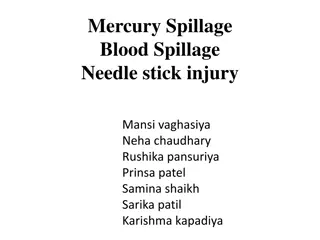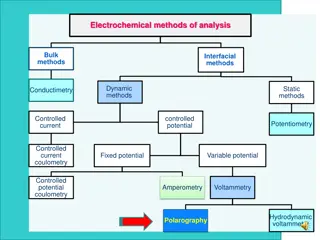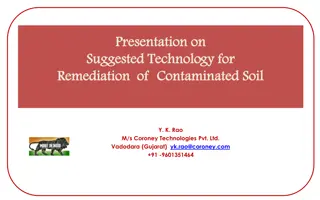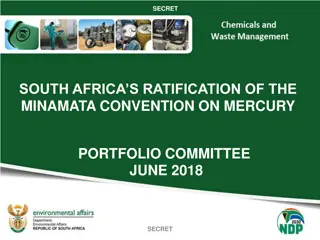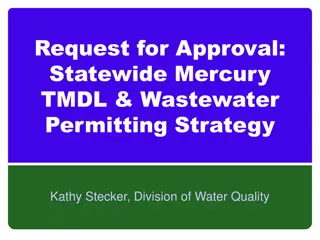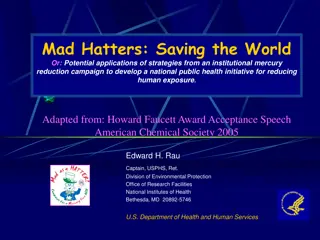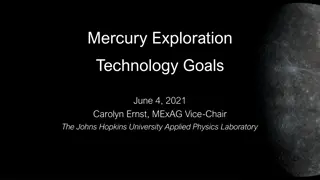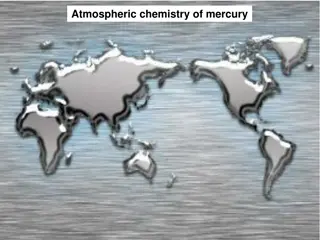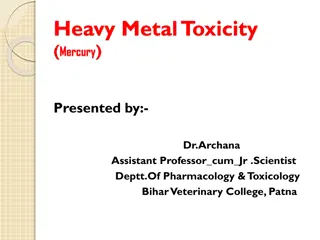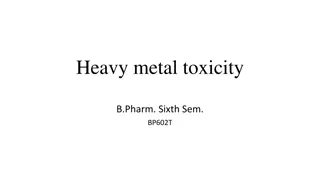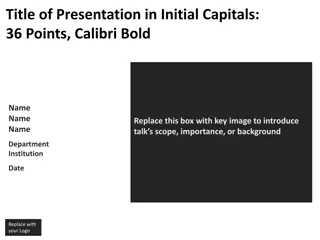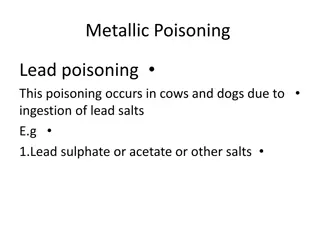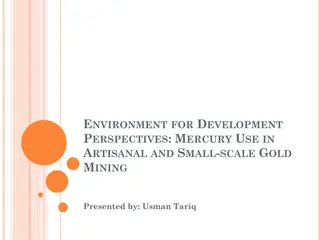Understanding Mercury: Environmental Impact and Atmospheric Role
Mercury, a global environmental concern, is sourced from fish consumption and industrial activities. Its electronic structure and biogeochemical cycle contribute to its volatility and toxicity. Global transport through the atmosphere plays a significant role in its distribution and deposition, impacting ecosystems worldwide.
Download Presentation

Please find below an Image/Link to download the presentation.
The content on the website is provided AS IS for your information and personal use only. It may not be sold, licensed, or shared on other websites without obtaining consent from the author. Download presentation by click this link. If you encounter any issues during the download, it is possible that the publisher has removed the file from their server.
E N D
Presentation Transcript
Mercury from fish consumption: a global environmental issue EPA reference dose (RfD): 0.1 g kg-1 d-1 (about 2 fish meals per week) Children IQ deficits (fetal exposure) Well-established $8 billion per year cost in US Adult cardiovascular, fertility effects Suspected 1.6 Mercury biomagnification factor 1.4 Hg (mg/kg) 1.2 1.0 0.8 0.6 0.4 0.2 0.0 Tilefish Tilefish Tuna-fresh Skate Skate Cod Cod Crab Crab Shark Shark Halibut Sea trout Sea trout Swordfish Marlin Marlin Bluefish Grouper, Rockfish Snapper Snapper Lobster Lobster Croaker Croaker Squid Squid Whitefish Salmon Canned Tuna (lt) Pollock Pollock Mackerel Sablefish Grouper, Rockfish Scorpionfish Orange Roughy Lobster Mackerel Sablefish Halibut Scorpionfish Whitefish Swordfish Tuna-canned alb Tuna-canned lght Bluefish Canned Tuna (alb) Orange Roughy
Electronic structure of mercury Mass number = 80: 1s2 2s2 2p6 3s2 3p6 3d10 4s2 4p6 4d10 4f14 5s2 5p6 5d10 6s2 Filling of subshells makes elemental Hg(0) stable, liquid, volatile Mercury can also shed its two outer electrons (6s2) to produce Hg(II) (mercuric) compounds oxidation Hg(0) reduction elemental mercury 6s2 Hg(II) mercuric compounds
Biogeochemical cycle of mercury ANTHROPOGENIC PERTURBATION: fuel combustion Mining WATER-SOLUBLE VOLATILE oxidation ~10x natural Hg(II) Hg(0) [head] volcanoes erosion ATMOSPHERE OCEAN/SOIL Hg(0) Hg(II) particulate Hg reduction biological uptake burial uplift SEDIMENTS
Global transport of mercury through the atmosphere Present-day emission of mercury to atmosphere from coal and mining Implies gPresent-day cale transport of anthropogenic emissions Atmospheric concentrations Observed variability of atmospheric Hg implies an atmospheric lifetime against deposition of about 0.5 years UNEP [2013]; Horowitz et al. [2017]
Mercury wet deposition is controlled by global transport EPA deposition data (circles), model (background) Florida T-storm https://www.eol.ucar.edu/dir_off/ASR/FY2000/images/hector1.jpg Global Hg(II) pool scavenging Highest mercury deposition in US is along the Gulf Coast, where thunderstorms scavenge globally transported mercury from high altitudes Selin and Jacob [2008]
Atmospheric redox chemistry of mercury: driver of mercury deposition Oxidation of Hg(0) by OH is too slow Oxidation by Br atoms is currently thought to dominate Hg+Br+M HgBr+M hv HgBr+X+M HgBrX+ HgBrX+M X Hg+Br+X OH, Br, Cl, NO , HO 2 2 Hg(0) hv OH CHBr3 bromoform Br weeks Hg(II) HBr deposition deposition ocean plankton
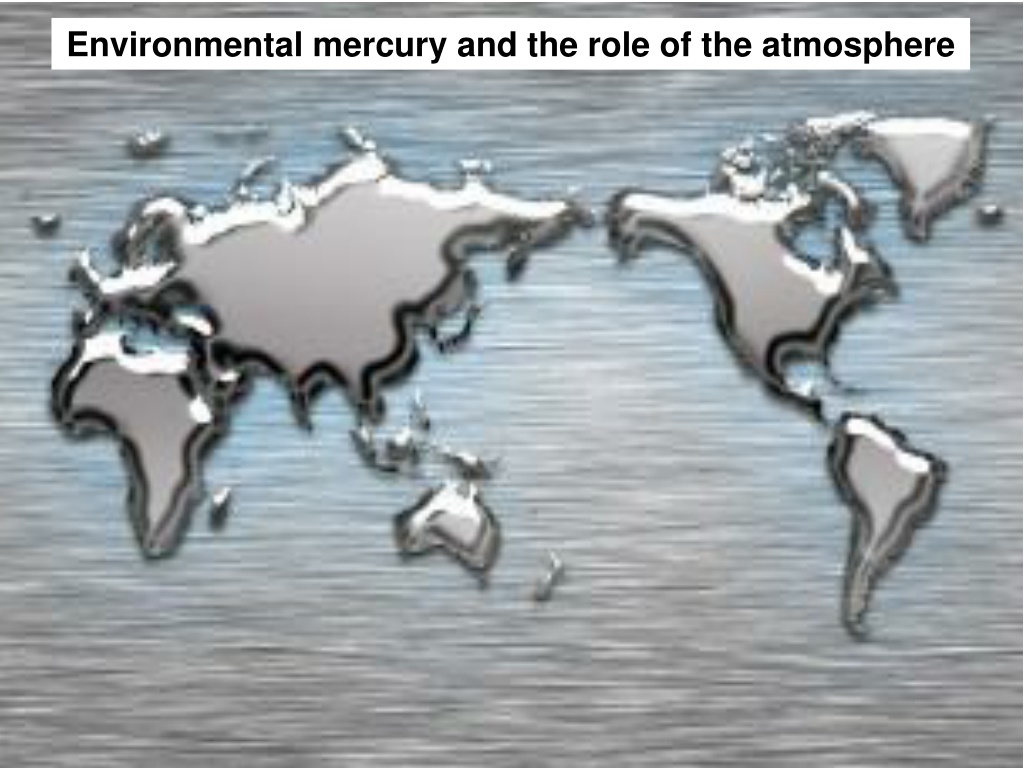

![[PDF⚡READ❤ONLINE] Planet Mercury: From Pale Pink Dot to Dynamic World (Springer](/thumb/21549/pdf-read-online-planet-mercury-from-pale-pink-dot-to-dynamic-world-springer.jpg)


